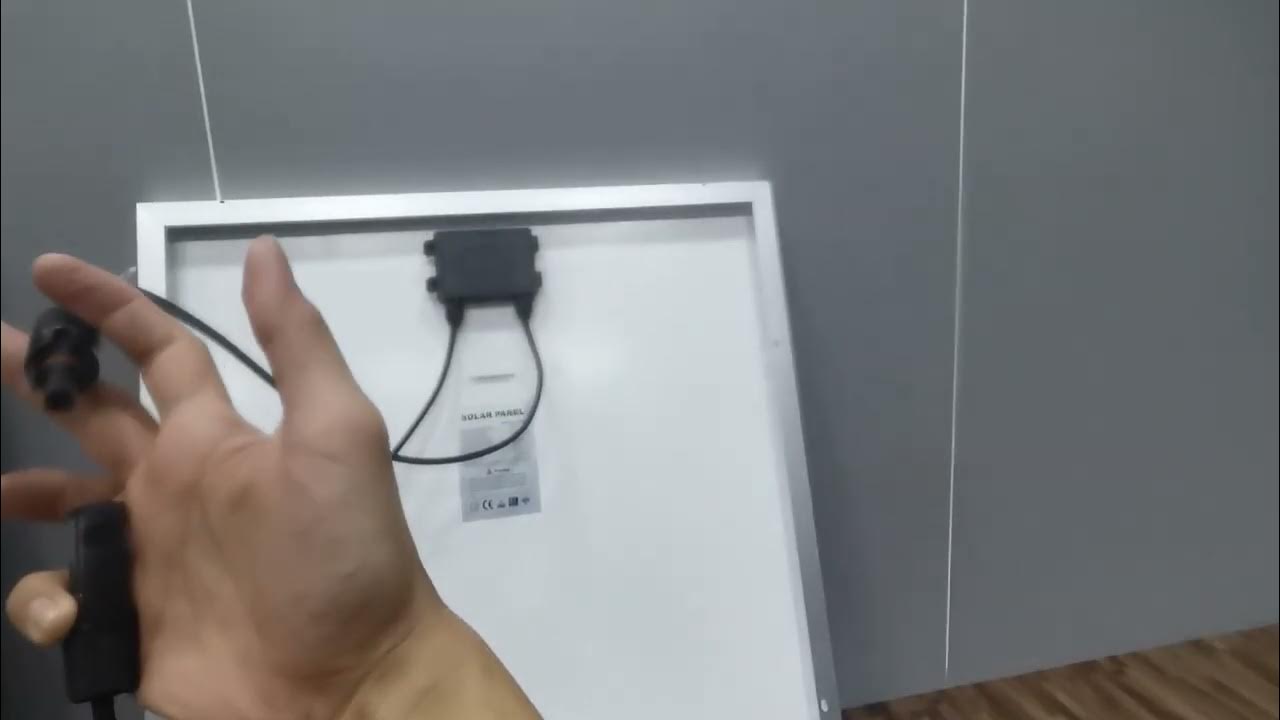有了這個,臨時停電不用怕|更是車泊露營好伴侶-太陽能發電/儲電系統DIY 全攻略 #許博輕鬆學
Summary
TLDRThis video provides a comprehensive guide on building your own solar power system, explaining the key components such as solar panels, batteries, controllers, and inverters. It covers the functions of each device, from converting sunlight into electricity to storing and using it efficiently. The guide offers detailed instructions on how to connect these devices, select the right specifications, and ensure proper system setup. Additionally, it discusses different types of solar panels, batteries, and controllers, and provides tips on maintenance to keep the system running smoothly, making it an ideal resource for DIY solar power enthusiasts.
Takeaways
- 😀 Solar power systems help prevent inconvenience caused by power outages, especially during peak electricity consumption in summer.
- 🔋 The main components of a solar power system include solar panels, a battery, a controller, and an inverter.
- 🌞 Solar panels convert sunlight into electricity and are available in different types: monocrystalline, polycrystalline, and thin-film.
- 🔌 Batteries store electricity, with deep cycle batteries being ideal for solar systems due to their ability to handle multiple deep discharges.
- ⚡ Controllers manage the charging process and prevent issues like overcharging, overdischarge, and reverse connections.
- 💡 There are two types of solar controllers: PWM (Pulse Width Modulation) and MPPT (Maximum Power Point Tracking), with MPPT being more efficient.
- 🔌 Inverters convert the DC power from solar panels and batteries into AC power for home use and should match the voltage of the battery.
- 📐 The specifications of each device should be carefully considered based on your energy needs, such as the size of the battery and solar panel wattage.
- ⚙️ When designing a solar power system, it is important to ensure the right combination of solar panels, battery capacity, inverter power, and controller type.
- 🛠️ Regular maintenance of the solar power system includes cleaning solar panels, checking connections, and ensuring battery health to maintain efficiency and longevity.
Q & A
What are the main components of a solar power system?
-The main components of a solar power system include solar panels (to capture light energy), a battery (for storing electricity), a controller (to transfer electricity from the solar panel to the battery), and an inverter (to convert DC to AC).
What is the function of the controller in a solar power system?
-The controller manages the charging process, prevents overcharging, over-discharging, and reverse electrical connections. It ensures the safe and efficient operation of the system.
What is the difference between PWM and MPPT controllers?
-PWM (Pulse Width Modulation) controllers adjust charging voltage by modulating the width of pulses, but they are less efficient under variable lighting conditions. MPPT (Maximum Power Point Tracking) controllers optimize the working voltage of solar panels to improve charging efficiency, especially under changing sunlight, but they are more expensive.
Why is it important to select a high-efficiency inverter?
-A high-efficiency inverter (above 93%) ensures that more of the solar power is converted into usable AC power, which improves the overall performance of the solar power system and reduces energy waste.
What are the common types of solar panels, and how do they differ?
-The common types of solar panels are monocrystalline silicon (high conversion rate, more expensive), polycrystalline silicon (lower conversion rate, less expensive), and thin-film (flexible, lower efficiency but lightweight and portable).
What is the recommended type of battery for solar power systems?
-Deep cycle lead-acid batteries are ideal for solar power systems due to their ability to handle deep discharge cycles without significantly affecting their lifespan. They are more durable and suitable for continuous power supply.
How do you calculate the power requirement for a solar power system?
-To calculate the power requirement, determine the total wattage needed for devices (like a refrigerator) and multiply by the hours of usage. For example, a refrigerator using 200 watts per hour for 4 hours needs 800 watts. You also need to factor in the battery capacity and solar panel wattage.
What is the significance of selecting a 12V or 24V solar panel?
-A 12V solar panel is typically used for systems generating less than 1 kWh, while a 24V solar panel is recommended for systems generating more than 2 kWh. The voltage selection depends on the power needs of the system and the battery configuration.
Why should the inverter's peak power be considered when designing a solar system?
-The inverter's peak power rating ensures it can handle short bursts of high energy demand from appliances. For instance, if your appliances total 1kW, you need an inverter that can handle at least 2kW of peak power to avoid overload and power failure.
What are the maintenance requirements for a solar power system?
-Maintenance tasks include cleaning the solar panel surface to remove debris, checking the stability of the bracket structure, ensuring proper ventilation for the inverter, inspecting battery terminals for corrosion, and making sure the system's wiring is intact and functional.
Outlines

This section is available to paid users only. Please upgrade to access this part.
Upgrade NowMindmap

This section is available to paid users only. Please upgrade to access this part.
Upgrade NowKeywords

This section is available to paid users only. Please upgrade to access this part.
Upgrade NowHighlights

This section is available to paid users only. Please upgrade to access this part.
Upgrade NowTranscripts

This section is available to paid users only. Please upgrade to access this part.
Upgrade NowBrowse More Related Video
5.0 / 5 (0 votes)





